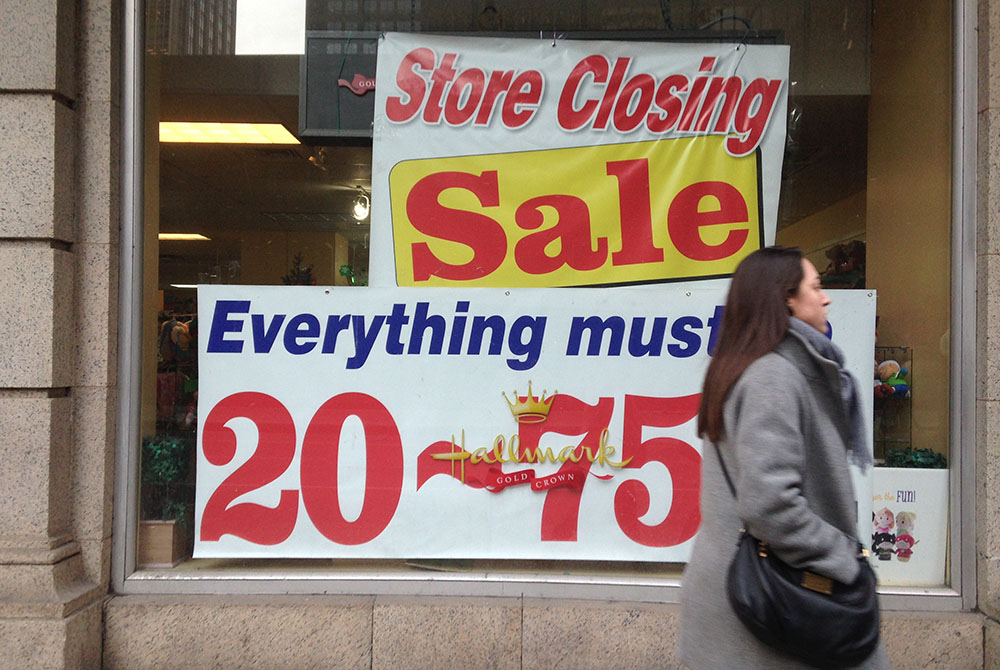By Meredith Wilson
Consumers in lower- and middle-income households are less optimistic about their finances and the future of the American economy than higher income households, according to the University of Michigan consumer sentiment index released Friday.
Overall economic confidence dropped by 4.4 percent from last month, driven by a 6.5 percent decline in confidence among the lower and middle classes. Upper income households reported a 3.2 percent rise in optimism.
A few passersby interviewed at random in the Loop seemed to feel that the economy – and their own finances – were heading in the right direction.
Robert Zalabak said he just got a new job as a disability case manager with JPMorgan Chase & Co.
“I’m doing much better. Got a new job, making quite a bit more money,” Zalabak said.
The bottom two-thirds attributed their pessimism to lower incomes, higher utility costs and the cold weather, according to the index.
The overall decline in confidence could indicate less willingness on the part of consumers to spend. A three-month decline in retail sales and unexpectedly slow growth in consumer debt for January seems to support that.
Alicia Miran said she feels good about her financial state, but isn’t spending money.
“I’m much better. I have cut down on my spending and I paid off all my debt. I am now debt-free,” Miran said.
Chris Mariano, a bartender, feels the affects of slower spending.
“In my industry, in the restaurant industry, what I found that what people were doing was maybe don’t buy that bottle of wine, maybe buy a glass of wine,” Mariano said.
Despite that, he thinks the economy is on the “up and up” and that he is in a good place, financially.
“Definitely way better than a year ago, but I think I’ve just been handling my money way better,” Mariano said.
Analysts consider the consumer sentiment index a leading indicator, which, combined with other consumer indicators, can paint a picture of how consumers are doing. Consumer spending constitutes two-thirds of the U.S. economy.
The consumer price index, which measures the prices of what people buy, declined by 0.7 percent in January. Personal income rose by 0.3 percent in January. The producer price index, which measures what sellers make from their goods and services, declined 0.8 percent in January, while gross domestic product rose by 2.2 percent in the fourth quarter of 2014.
America is producing more and paying less for its goods, overall. Unemployment is at 5.5 percent, the lowest it has been in seven years, and people have more money than they did last month. However, two-thirds of consumers are not optimistic about their financial state.
The Federal Reserve appears to share their lack of optimism.
Federal Reserve Chairwoman Janet Yellen has yet to raise interest rates. Raising rates would signal confidence that the economy is strong enough to support them.
In her recent testimony before the Senate Committee on Banking, Housing and Urban Affairs, Yellen said, “the labor force participation rate is lower than most estimates of its trend, and wage growth remains sluggish, suggesting that some cyclical weakness persists.”
Despite the concerns over the economy’s recovery, the consumer sentiment index notes: “the overall level of consumer confidence remains favorable enough to support 3.3% growth rate in personal consumption expenditures during 2015.”
But even the confident Zalabak said that though he’s making more money, he’s not going to be making any big-ticket purchases any time soon.
“I have a lot of student debt I’m paying off. Once that’s paid off, in three or four years, then yeah. But getting free of debt, that’s principal on my list,” Zalabak said.
The next consumer sentiment index comes out March 27.

